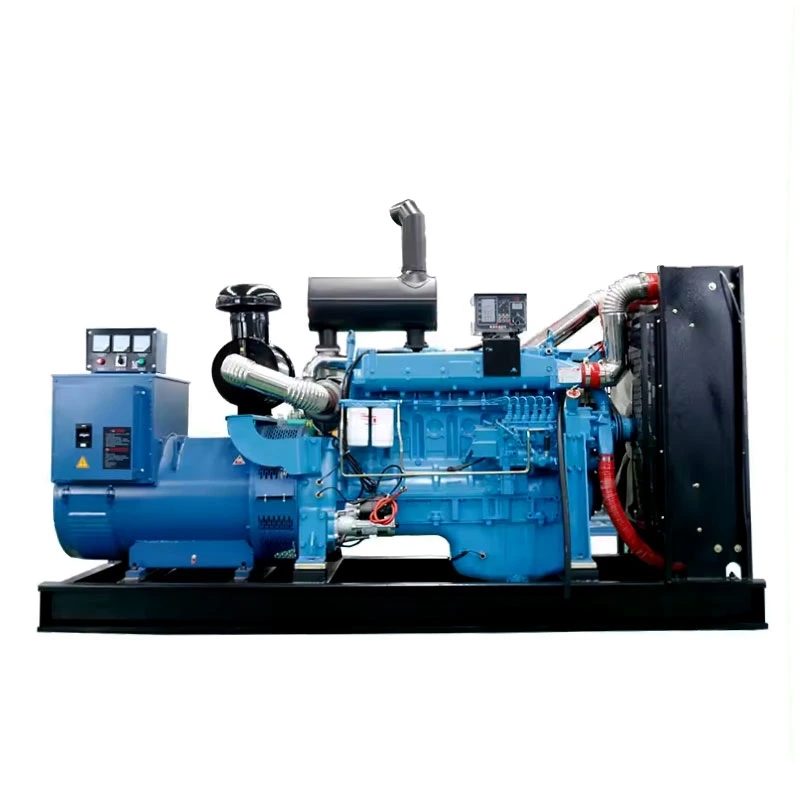Introduction

Diesel generators are essential power sources in various industries and applications, providing backup or primary power in case of electrical grid failures or as a reliable standalone power solution. However, in environments with corrosive atmospheres, such as coastal areas, chemical plants, and offshore platforms, the durability and performance of diesel generators can be significantly compromised. Corrosion can cause damage to critical components, leading to operational failures, increased maintenance costs, and safety risks. In this article, we will explore the challenges of operating diesel generators in corrosive atmospheres and discuss the key considerations and best practices for ensuring the reliability and longevity of these vital power sources.
Understanding Corrosive Atmospheres
Corrosive atmospheres are environments where the presence of corrosive agents, such as salt, moisture, chemicals, and pollutants, can accelerate the degradation of materials and equipment. In coastal areas, the salt-laden air can cause rapid corrosion of metal surfaces, while chemical plants expose equipment to corrosive chemicals that can eat away at various components. Offshore platforms face the combined challenges of saltwater exposure, high humidity, and harsh weather conditions, all of which contribute to accelerated corrosion rates.
The Impact of Corrosion on Diesel Generators
Corrosion poses a significant threat to the reliable operation of diesel generators, affecting critical components such as engine blocks, fuel systems, electrical connections, and control panels. When exposed to corrosive atmospheres, these components can experience rust, pitting, erosion, and other forms of deterioration, leading to reduced performance, increased wear and tear, and ultimately, system failures.
Engine Blocks: Corrosion of the engine block can compromise the structural integrity and thermal efficiency of the diesel generator. Pitting and rusting on the surfaces can lead to coolant leaks, reduced cooling capacity, and overheating issues, affecting the overall performance and lifespan of the engine.
Fuel Systems: Corrosion in the fuel system, including fuel tanks, lines, and injectors, can result in fuel contamination, blockages, and inefficient combustion. Portable diesel generator for outdoor irrigation can lead to poor engine performance, increased fuel consumption, and potential breakdowns due to fuel system failures.
Electrical Components: Corrosion of electrical connections, wiring, and control panels can cause electrical shorts, malfunctions, and system failures. Inadequate protection against corrosion can result in power outages, equipment damage, and safety hazards in critical applications.
Mitigating Corrosion Risks in Diesel Generators
To ensure the reliable operation of diesel generators in corrosive atmospheres, it is essential to implement proactive strategies for mitigating corrosion risks and protecting critical components. The following are key considerations and best practices for maintaining the integrity and performance of diesel generators in challenging environments:
1. Material Selection: Choosing corrosion-resistant materials for key components of the diesel generator, such as stainless steel, aluminum, and coated metals, can help enhance durability and longevity. Coatings, paints, and protective finishes can provide an additional layer of defense against corrosive agents.
2. Enclosure Design: Utilizing weatherproof and corrosion-resistant enclosures for diesel generators can shield sensitive components from exposure to moisture, salt, and chemicals. Enclosures should be properly sealed to prevent water ingress and allow for adequate ventilation to dissipate heat and humidity.
3. Regular Maintenance: Implementing a comprehensive maintenance schedule for diesel generators is essential for monitoring and addressing corrosion issues in a timely manner. Regular inspections, cleaning, lubrication, and corrosion protection treatments can help prevent the accumulation of corrosive agents and extend the lifespan of critical components.
4. Corrosion Inhibitors: Applying corrosion inhibitors, coatings, and sealants to vulnerable components of the diesel generator can provide an additional layer of protection against corrosion. These chemical treatments can form a barrier to prevent the interaction of corrosive agents with metal surfaces and slow down the corrosion process.
5. Environmental Monitoring: Installing environmental monitoring systems, such as humidity sensors, temperature gauges, and corrosion detectors, can help track the conditions within the operating environment of the diesel generator. By monitoring key parameters, operators can identify potential corrosion risks early on and take corrective actions to prevent damage.
6. Proper Ventilation: Ensuring adequate ventilation and airflow around the diesel generator can help reduce humidity levels and prevent the buildup of corrosive condensation. Proper ventilation design should facilitate the exchange of air while keeping out moisture and contaminants that can accelerate corrosion.
7. Protective Coatings: Applying protective coatings, paints, and sealants to exposed surfaces of the diesel generator can provide a durable barrier against corrosion. These coatings should be resistant to UV radiation, chemicals, and abrasion to maintain their effectiveness in harsh environments.
Case Studies and Success Stories
Several industries and applications have successfully implemented corrosion mitigation strategies for diesel generators in challenging environments. For example, a chemical plant in a coastal region installed stainless steel enclosures and implemented regular maintenance practices to protect their diesel generators from saltwater exposure and chemical contaminants. As a result, they were able to extend the lifespan of their equipment and reduce downtime due to corrosion-related failures.
In another case, an offshore drilling platform utilized corrosion-resistant coatings and environmental monitoring systems to safeguard their diesel generators from the harsh marine environment. By proactively addressing corrosion risks and investing in protective measures, they were able to ensure the continuous operation of their power systems under extreme conditions.
Conclusion
Operating diesel generators in corrosive atmospheres presents unique challenges that require careful consideration and proactive measures to ensure reliable performance and longevity. By understanding the impact of corrosion on critical components, implementing corrosion mitigation strategies, and adhering to best practices for maintenance and protection, operators can safeguard their diesel generators in challenging environments. With proper material selection, enclosure design, maintenance practices, and corrosion inhibitors, diesel generators can withstand the corrosive effects of salt, moisture, chemicals, and pollutants, providing uninterrupted power supply when it is needed most. By prioritizing corrosion prevention and protection, industries can maintain the reliability and efficiency of their diesel generators in corrosive atmospheres, ensuring a stable and resilient power source for their operations.
